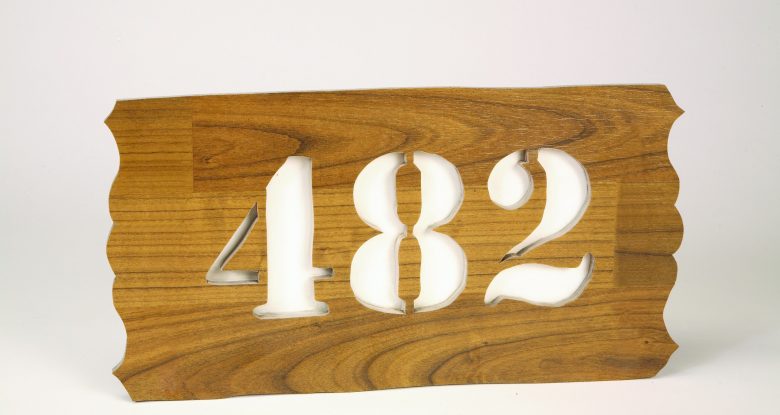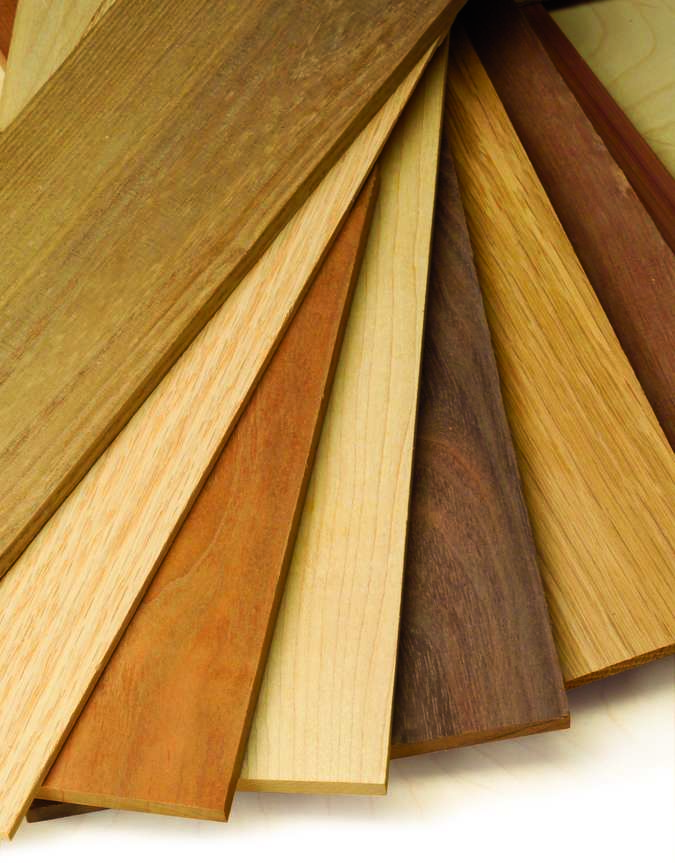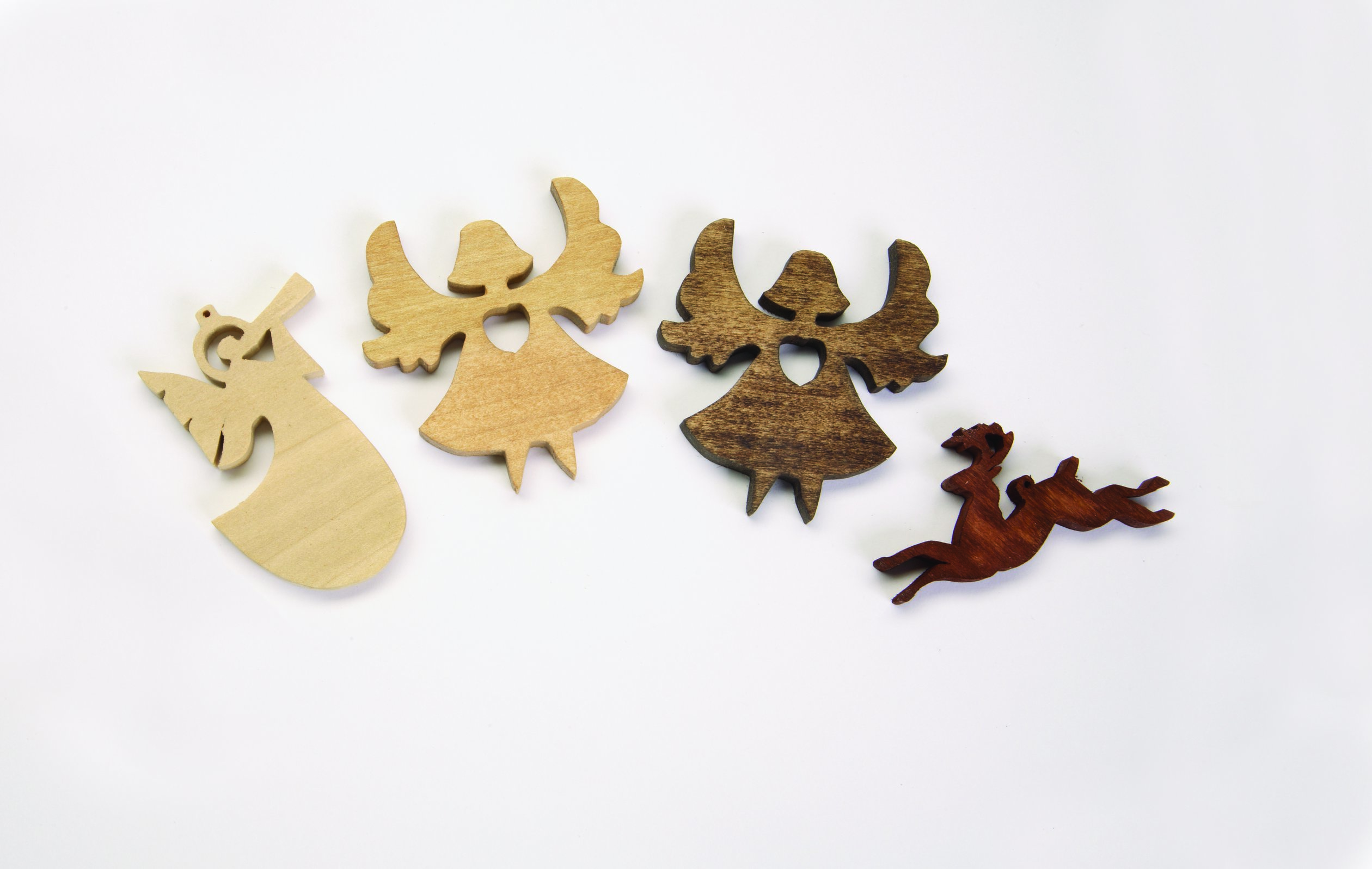by Bob Duncan
This article was first published in issue 27 of Scroll Saw Woodworking & Crafts.
While there is a wide variety of both hard and soft woods suitable for scrolling, there are several manufactured woods that deserve a mention.
Manufactured woods range from expensive commercial flooring to economical medium-density fiberboard (MDF). The most commonly used type is plywood. Both MDF and plywood are readily available in large sheets, giving you the dimensions and strength needed for bigger projects. Wear and tear of blades on manufactured woods is comparable to what you would experience with domestic hardwoods.
Medium Density Fiberboard
Medium Density Fiberboard (MDF) is made up of ground-up wood fibers, glued and pressed together. The wood is more finely ground in MDF than in particleboard. This makes it more uniform through the entire board, but it isn’t as strong as particleboard.
MDF ranges in color from a chocolate brown to a light tan, and thicknesses from 1/4″ to 2″. It is usually used for molding or intricately shaped pieces where the larger chips of particleboard are undesirable.
MDF is a good choice for scrollers because of its uniform particle size. There is no grain to contend with, and it cuts easily. It is not particularly attractive, so most scrollers end up painting or staining it. It accepts both finishes well and is best suited for less intricate fretwork or segmentation projects.
Baltic Birch Plywood
Baltic birch plywood is a favorite among scrollers and considered a high-density plywood. All plywood is made up of more than one layer, or ply, of material. Some manufacturers sandwich an MDF core between two thin layers of hardwood. Others use inferior woods of varying thickness as a core, and include voids and weak areas. High-density plywood boasts a larger number of thin layers, with alternating grain directions, which adds strength to the wood.
Baltic birch is an inexpensive alternative to hardwoods and is stronger than traditional wood of the same thickness. Another top feature is the bland, but smooth surface. These qualities make it an ideal medium for intricate work.
Baltic birch is easily stack-cut and accepts most finishes well. With a little practice, it can be disguised as a hardwood by using stains and finishes.
Laminate Flooring
Commercial flooring comes in a wide array of colors and finishes. SSW&C author Carl Hird-Rutter has cut several designs in bamboo flooring. Coordination of your pattern with the finish can create a very effective piece of art.
This material is usually quite easy to cut. Something to be aware of is the orientation of the layers in the laminate. You will find that no matter how sharp your blade is, it may still scorch the material inside the cut. Apply tape to the face of the wood to help prevent burning.
Since the material is pre-finished, it speeds up the process for many projects. There are several types of laminate flooring and the finish depends on the orientation of the laminations. Editor Shannon Flowers used a scroll saw to cut a house sign out of scraps of her kitchen flooring. The sign shows no wear after three years in the elements.
Discuss this material on the Scroll Saw Woodworking & Crafts forums.









